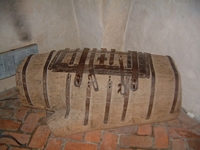
3) Chest development in Europe.
- Dug out.
A chest made from a log by cutting a lid off the log and gouging out the interior of the chest out of the rest of the log, then reattaching the lid with hinges and a hasp.

12th century dug out chest from Gamla Uppsala, Sweden. (Picture Source: http://www.greydragon.org/trips/stockholm/index5.html)
- Six plank rectangular prism
A six plank chest consists of: a lid, a front and a back, two ends and a bottom, without legs.
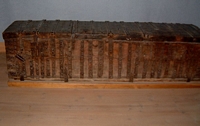
Un-dated chest from Sweden's Museum of National Antiquities (Historiska
Museet). (Photo Source: http://www.greydragon.org/trips/stockholm/index3.html.)
- Trapezoid on legs.
A six plank chest where the ends of the chest slope inwards to the centre of the chest. In the case of one of the chest from the Oseberg find (Chest 149), the front also slope towards the back.
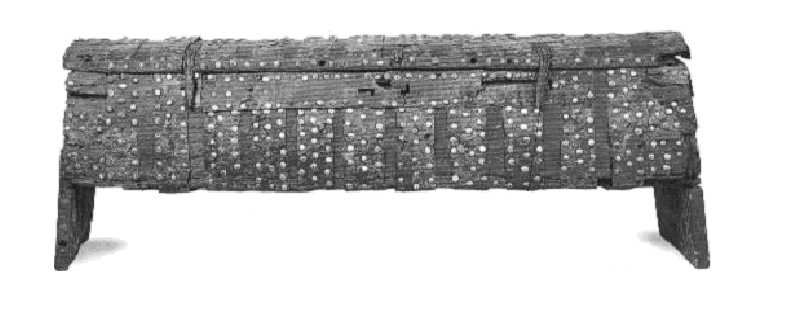
9th century Viking chest from the Oseberg ship burial, Oseberg, Sem,
Vestfold, Norway. Universitetets Oldsaksamling, Oslo, 149
- Rectangular prism on legs
A six plank chest where the ends of the chest are square to the centre
of the chest and it stands on legs. In later cases, the leg where given
cut outs in range of designs.
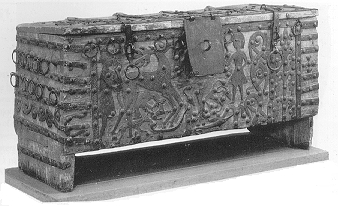
C. 1200 Chest for the Voxtorp church, Småland, Sweden.
Statens Historiska Museum, Stockholm, 4094.
- Hutch
A rectangular chest made up of up to ten or more pieces, where the legs
of the front of the chest add to the over all length of the chest, thus
enabling a larger chest to be made.
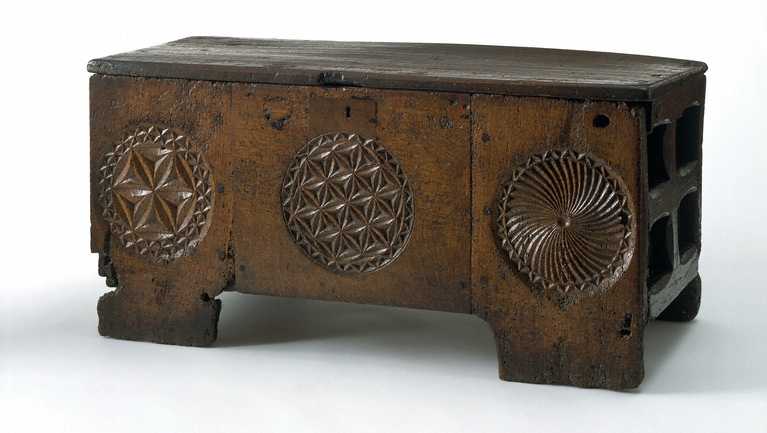
12th – 13th century hutch chest from the Victoria and Albert Museum,
Museum Number W.30-1926.
- Hutch with long legs.
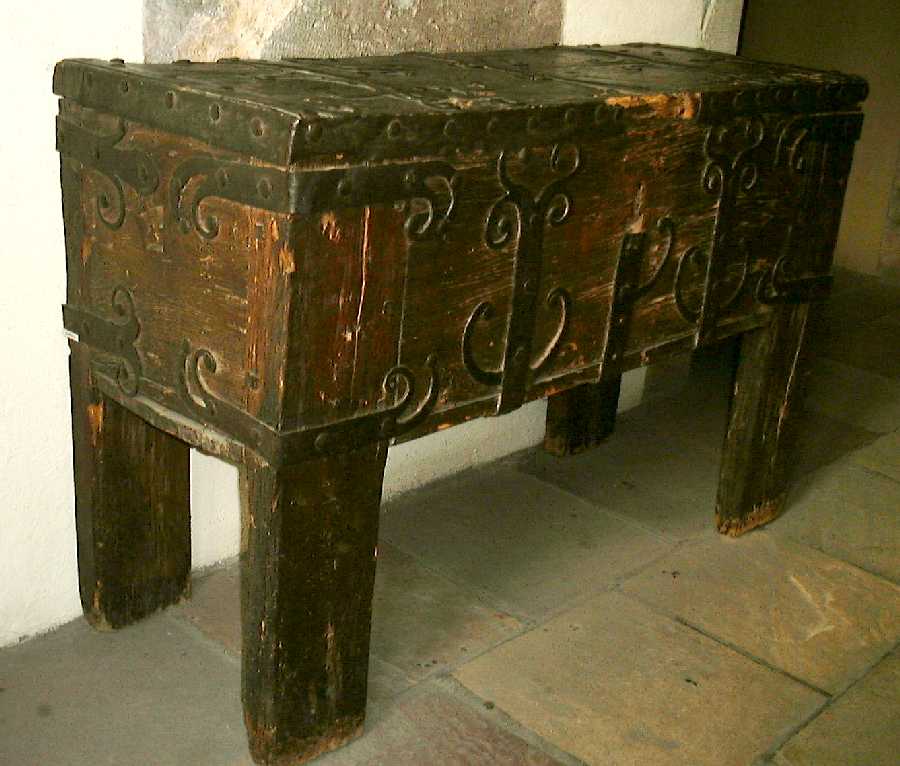
13th century chest from the l'Oeuvre Notre-Dame Museum in Strasbourg,
France. (Photo source: http://www.greydragon.org/furniture/oeuvre.html)
| Copyright © Stephen Francis Wyley 2005
[email protected] |